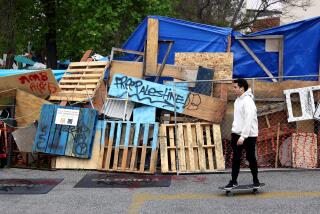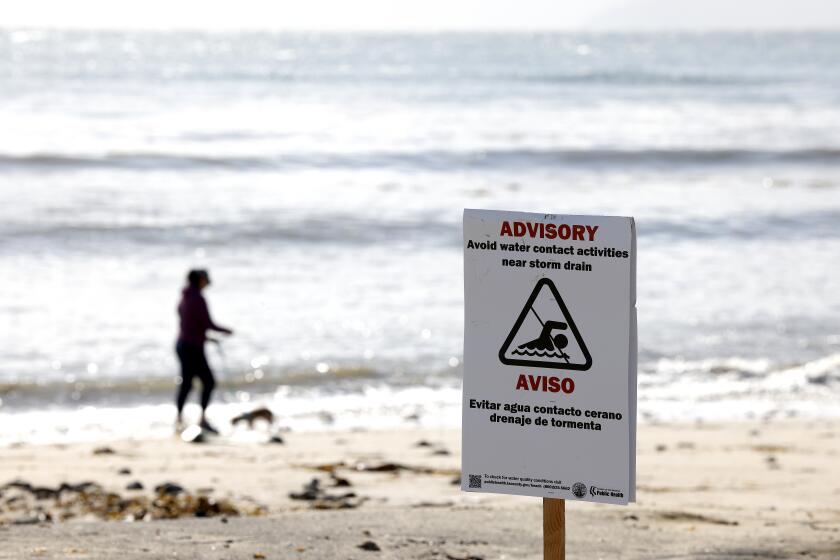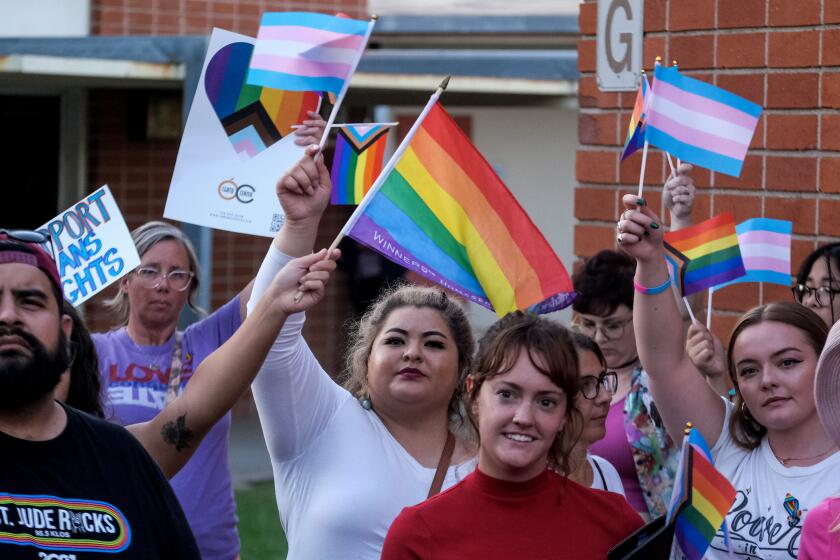Valley Interview : Children May Need Help Dealing With Bomb Tragedy
Who will ever be able to forget the sight of children, bleeding and broken--some dying and some already dead--being carried from the wreckage of the Alfred P. Murrah Federal Building in Oklahoma City after last week’s attack?
Men and women across the nation cried over those images--and are demanding retribution.
But experts say it is our children, who have yet to learn how to cope with such events, who are particularly vulnerable to feelings of fear and anger in the wake of the bombing. As many as 30 children are believed to have been killed in the blast, which ripped apart a day-care center at the Murrah building. Dozens more were injured.
President Clinton, in Oklahoma City for a memorial service Sunday for those slain, urged children around the nation to write to the children of Oklahoma City and offer support.
“We must let our own children know that we will stand against the forces of fear,” Clinton said at a memorial for the slain.
Leslie Godwin, a Calabasas-based family therapist, said children in the San Fernando Valley may be traumatized by the bombing in Oklahoma City even though it happened halfway across the country. The pictures on television news--particularly those of injured children--have been so gruesome, she said, that children under 6 shouldn’t be allowed to watch.
She said some children, particularly those who have been hospitalized themselves or have seen a sibling after surgery, might be especially shaken by the events in Oklahoma. Youngsters who spend time in day care centers may also need special reassurance.
Godwin in an interview discussed ways to help children deal with their feelings and fears following the bombing.
Question: Why should San Fernando Valley parents be concerned about what happened in Oklahoma City?
Answer: Partly because television news, and the dramatic pictures the programs show, really collapse the distance. They’re unfortunately showing a lot of pictures of bleeding babies. You can’t distance yourself from that. Also, because it hit a day-care center. There are a lot of parents who already feel guilty for sending their kids to day care, and while it doesn’t mean their own day care center is not safe, they hear that children have been killed. In a child’s mind there’s no way to distinguish. They see children hurt and it’s very close to home for them. (Children) see day care, and think, “I go to day care.” Parents need to let them put it into perspective and talk about their feelings.
Q: How do you do that?
A: The most important thing to do is to listen. Tell them, “You may not have feelings about this, but maybe you do.” Say, “It was hard for me to watch TV news. How about you?” And I think the younger children should not be allowed to watch the news, especially when they’re showing these dramatic, gory pictures. With older children, it would be helpful for the parents to watch the news with them and then they could talk about it together.
Q: Do the children in your practice seem to be affected by the bombing?
A: The younger children were the most anxious. The older children and adolescents were angry. They really wanted to torture the people who were responsible for this. They were very interested in justice being done. And it was a primitive form of justice. An “eye for an eye” justice. They wanted to create the same feelings in the terrorists as the terrorists created in the innocent victims who were killed. I think that’s a common response for children. They want the other person to have to feel what they’re feeling.
Q: Are there similarities in the way some children are reacting to the bombing and the way many reacted to the Northridge earthquake?
A: Parents have really had to deal with so many disasters but this is different. This is a person or people who wanted consciously to kill innocent people. That has a different effect on us than an earthquake. We know there are going to be earthquakes, but this was a deliberate attempt to kill innocent people. And it was especially frightening and anger-provoking to think that people could be so cruel.
On another level, there are similarities to the earthquake and other disasters. The city is in a crisis, people are drawn together to try to help, and people feel their sense of safety and security threatened.
Q: Can children distinguish between cartoons, which can be violent but are fictional, and the news?
A: When children see these shocking pictures of bleeding babies it seems very real to them, and they can also see their parents’ reactions, and they can see it is real. Also, in TV shows, the bad people get caught and the issues get resolved. Real life isn’t fair.
And to be honest, there are a lot of children who don’t handle the violence in cartoons very well.
Q: What might parents be hearing from their children this week, as time passes and the rescue and cleanup continue?
A: By now, people have had a chance to let their feelings sink in. I think the initial reaction to these kinds of situations is shock. I think by now parents will know if the bombing is having any lasting effects on their children. If a child is still scared, it’s very important to talk. Parents might be hearing, “Do you think there is a bomb under our house? Is there anything under my bed? Is my day care center going to blow up? What about those people who were trapped?”
There may be a spectrum all the way from irrational fears of terrible things that might happen to them to concerns for the victims in a realistic way.
Q: What should parents tell children about their own feelings?
A: I think that it’s important for parents to be honest with their children--to say, “I am concerned about this,” or “This is scary,” but not to unload their feelings or overwhelm their child with their feelings. The parent needs to take care of that with other adults. Some parents might think it’s their responsibility to pretend they don’t have any feelings so their child doesn’t get scared. I don’t recommend that. But you don’t want to talk on and on about your own feelings when trying to learn about your child’s feelings.
Q: What can parents do?
A: I would say something like, “Let’s go get your flashlight and we’ll look under the bed and make sure there’s nothing there. We’re going to look in the closet too. We’re going to make sure you’re safe in here.” If they’re still scared, I might say, “What can we do to help with that?” They might want to read a bedtime story. They might regress a little bit and need the kind of reassurance they needed when they were a little bit younger. If you’re comfortable with them sleeping with you and that would be helpful for them, that’s fine.
If the child is frightened at school or their day care center, parents might want to talk to the teacher about reassuring the child. Or children could send a portion of their allowance to the Red Cross to help victims.
If a child is really struggling with this, they might want to write their own little story about it. They can put the ending to the story that they like and feel a little bit more in control.
It’s important to tell the children that the President and the authorities are trying very hard to catch these people and punish them.
If the child continues to be upset, the parent might consider counseling.
More to Read
Start your day right
Sign up for Essential California for news, features and recommendations from the L.A. Times and beyond in your inbox six days a week.
You may occasionally receive promotional content from the Los Angeles Times.






